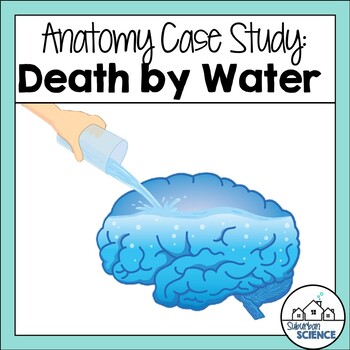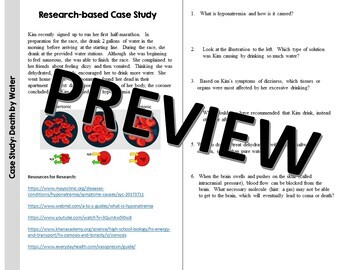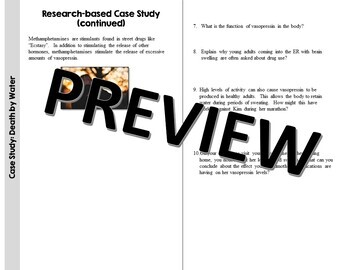Student Case Study - The role of sodium in maintaining homeostasis
What educators are saying
Learning Objective
-Students will be able to explain the causes, symptoms, and treatment for hyponatremia. -Students will understand the function of vasopressin in the body.
Description
Death by water! Your high school students will love learning about hyponatremia- mine always do! Patient case studies make a great addition to a Biology or Anatomy course and the problem-based lessons provide a great example of real NGSS phenomena. This case study fits seamlessly with a unit on osmosis or cells.
Case studies are perfect for extending thinking on a topic or for use as sub plans. Answer keys are included.
Topics addressed: Hyponatremia, sodium concentration, intracranial pressure, electrolytes, tonicity of solutions, osmosis, vasopressin, methamphetamines
Three versions are included:
1. Guided Case Study- Students are presented with the symptoms and diagnosis, then led through the related information about the condition. Questions are presented as a reading comprehension-style assignment. This is a great choice for struggling students or as a quick supplement to your unit.
2. Research-based Case Study- Students are presented with the symptoms and diagnosis. Websites are provided for additional information in order to answer the related questions about the condition. This is a great choice for more advanced/independent students or if you have more available class time.
3. Digital Case Study- Students are provided the same links as the research-based study, but they are live websites for easy internet searching and questions are provided in a digital document or Google Form for easy grading. This is a great choice for 1:1 classrooms or independent learners that are familiar with Google Classroom.
*Please note: To determine if this case study fits with the difficulty-level of your course, please click on the PREVIEW above.
Teaching Biology? If you haven't introduced cells and osmosis to your class yet, you might want to use my Introduction to Cells Unit (includes PowerPoint, labs, activities, and test). Just want a quick lab? Check out my best-selling Osmosis Lab.
Teaching Anatomy & Physiology? Give your class a great review of basic biological concepts on their level by using my Introduction to Anatomy & Physiology Unit.
Looking for more resources? See my other Anatomy Case Studies and my Full Anatomy Curriculum!
________________________________________________________________________
⭐For updates about sales and new products, please follow my store: My TpT Store
You can also
⭐Subscribe to my newsletter for freebies and teaching tips
⭐Follow me on Instagram
⭐Check out my Facebook page
⭐Follow me on Pinterest
I value your feedback. Please rate this product. If you have any issues or questions about this product, please feel free to ask a question in my store or write to me at support@suburbanscience.com.





